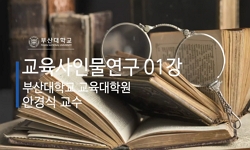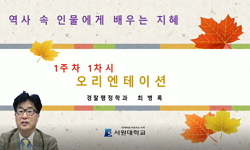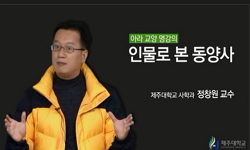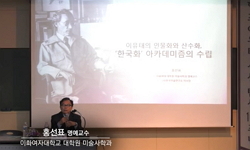본 연구는 惡女型 人物의 유형을 새롭게 분류해 보고, 이에 따른 형성 요인과 특징을 고찰해 보는 것을 그 목적으로 하였다. 이에 본고에서는 악녀형 인물들을 악의 성격과 그것을 바라보는 ...
http://chineseinput.net/에서 pinyin(병음)방식으로 중국어를 변환할 수 있습니다.
변환된 중국어를 복사하여 사용하시면 됩니다.
- 中文 을 입력하시려면 zhongwen을 입력하시고 space를누르시면됩니다.
- 北京 을 입력하시려면 beijing을 입력하시고 space를 누르시면 됩니다.
https://www.riss.kr/link?id=T9048493
- 저자
-
발행사항
화성 : 수원대학교 교육대학원, 2003
-
학위논문사항
학위논문(석사) -- 수원대학교 교육대학원 , 국어교육전공 , 2003. 8
-
발행연도
2003
-
작성언어
한국어
- 주제어
-
KDC
374.71 판사항(4)
-
발행국(도시)
경기도
-
형태사항
71p. : 삽도 ; 26cm
-
일반주기명
참고문헌: p. 66-68
- 소장기관
-
0
상세조회 -
0
다운로드
부가정보
국문 초록 (Abstract)
본 연구는 惡女型 人物의 유형을 새롭게 분류해 보고, 이에 따른 형성 요인과 특징을 고찰해 보는 것을 그 목적으로 하였다. 이에 본고에서는 악녀형 인물들을 악의 성격과 그것을 바라보는 당대 사회의 시각이 어떠했는가에 따라 그 유형을 달리하여 세 가지로 살펴보았다. 또한 古典小說뿐만 아니라 소설 형성에 중요한 소재를 제공한 民譚들도 포함하여 살펴보았다.
Ⅱ장에서는 한국 민담에 나타난 악녀형 인물에서는 <千年 묵은 여우>와 <靑도깨비>라는 이야기를 중심으로 살펴보았다. 여기서는 여우가 할머니로 둔갑하여 청년을 죽이고, 또한 도깨비가 하얀 노파로 둔갑하여 할머니를 죽인다. 물론 둘 다 절대적인 악 앞에서 아무 대응도 할 수 없었고, 아무런 이유 없이 잡아먹히고 죽임을 당하게 된다. 이를 分析心理學의 관점에서 주인공의 自我意識과 無意識의 표출과정을 통해 해석하였다.
Ⅲ장 고전소설에 나타난 악녀형 인물에서는 먼저, 爭寵型 家庭小說에 나타난 악녀들을 처·첩 갈등구조를 가진 <謝氏南征記>와 처·처의 갈등구조를 가진 <趙生員傳>을 중심으로 고찰해 보고, 이들이 악행을 저지르게 되는 근본적인 요인을 시대적 상황과 결부시켜 살펴보았다. 두 번째로 <女子行實錄>과 <興夫傳>에 나오는 주인공들의 인간형을 經濟的인 관점에서 구체적으로 살펴보았다. 경제적인 문제로 인한 갈등은 단순한 선악논리로 설명이 되지 않는다. 또한 시대에 따라 선악의 양상이 달라진다는 것을 전제하고, 단순한 권선징악의 문제를 벗어나 경제적인 요인으로 야기되는 善惡의 槪念을 새롭게 규정해 보았다.
이렇게 살펴본 악녀형 인물들은 시대적 상황과 그 시대를 살고 있는 작가의 의식에 따라 악행의 모습과 성격이 달라지고 있음을 알 수 있다.
민담에서 살펴본 絶對的인 惡은 말 그대로 아무런 이유와 근거가 없이 행해지고, 고전소설에 나타난 악녀들의 악행은 조선시대의 사회적 제도로 인해 고통받던 여자들이 신분상승과, 남편사랑의 독점이라는 慾望을 채우기 위해 행해진다. 그리고 조선후기에 와서는 商品·貨幣經濟의 발달로 인하여 경제적 관점에서 본 선악의 문제가 근면·검소하게 부를 축적하고 적극적으로 삶을 개척하는 사람을 긍정적인 인간형으로, 이에 반해 나태하고 게을러서 부를 모으기는커녕 재산을 탕진하는 사람을 부정적 인간형으로 규정되어 진다. 이는 시대에 따라, 또한 그 시대적 환경에 따라 악인들이 행하는 악의 성격과, 악행의 요인이 달라진다는 것을 보여준다.
다국어 초록 (Multilingual Abstract)
This paper aims at classifying the type of wicked women and studying their characteristics and backgrounds. On the outset, wicked women are classified into three categories in accordance with the nature of evil and social situations they are put in. C...
This paper aims at classifying the type of wicked women and studying their characteristics and backgrounds. On the outset, wicked women are classified into three categories in accordance with the nature of evil and social situations they are put in. Close observations of classics as well as folk tales, which have provided valuable subject matter for Korean novels, are also made in this paper.
In chapter 2, main characters in Korean folk tales - "A Thousand-year-old Fox" and "The Blue Bogy" - are used as an example. In "A Thousand-year-old Fox", a fox takes the form of an old lady, killing a young man. And in "The Blue Bogy", a bogy in old lady's clothing kills an old lady. Of course, in both stories, the victims can do nothing before the absolute evil. They are killed with no reasons. This paper analyses from the perspective of analytical psychology how the main characters reveal their self-consciousness and unconsciousness.
In chapter 3, wicked women appearing in Korean classics are observed: First, studies on the characters in family novels - "Sassinamjoenggi", which focuses on the conflict between wife and mistress, and "Josaengwonjoen", featuring the conflict between the first and the second wife - are thoroughly made. The fundamental reasons behind their evil deeds can be found in the context of the times. Second, the main characters in "yoejahangshilnok", a book about women's code of conduct, and "Heungboojoen", a story about "reward the good and punish the wicked", are observed from the economic perspective. In these books, conflicts stemmed from financial problems are not simply explained by the good- and-evil theory. Based on the fact that the notion of good and evil changes as time passes by, this paper comes up with a new definition of good and evil divided by economic reasons.
In conclusion, it shows that the behaviors and characteristics of wicked women highly depend on the intent and thoughts of the writers and the times they live in. For instance, wicked women conduct evil deeds with no ground or reasons in folk tales. Meanwhile, in classics, wrong doings are committed by the women, who are oppressed by the man-dominated society in the Chosun Dynasty, in order to raise their own social status and dominate husband's love. In the late Chosun dynasty, due to the development of the economy and the monetary standard, the notion of good and evil is clearly defined from the economic perspective: Good people are those who work hard to accumulate wealth. And bad people are those who are lazy enough to squander their wealth. This clearly shows that the nature of evil and the reasons of misdeeds change according to the times and social environment.
목차 (Table of Contents)
- 국문초록
- 목차
- Ⅰ. 序論 = 1
- 1. 硏究史 = 1
- 2. 硏究目的 및 硏究方法 = 5
- 국문초록
- 목차
- Ⅰ. 序論 = 1
- 1. 硏究史 = 1
- 2. 硏究目的 및 硏究方法 = 5
- Ⅱ. 惡女型 人物의 文學的 意味 = 8
- Ⅲ. 民譚에 나타난 惡女型 人物 = 12
- Ⅳ. 古典小說에 나타난 惡女型 人物 = 23
- 1. 爭寵型 家庭小設에 나타난 惡女의 모습 = 23
- 1) 爭寵型 家庭小設의 形成背景 = 23
- 2) <謝氏南征記> - 妻대妾 갈등구조 = 30
- 3) <趙生員傳> - 妻대妻 갈등구조 = 34
- 2. 經濟的 관점에서 본 善惡의 문제 = 38
- 1) 女子行實錄 = 38
- 2) 興夫傳 = 45
- Ⅴ. 結論 = 61
- 參考文獻 = 66
- ABSTRACT = 69












